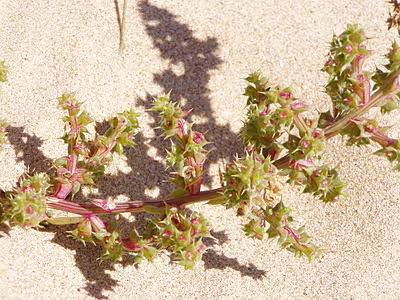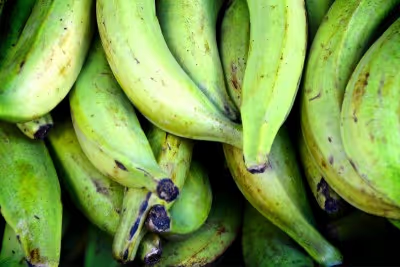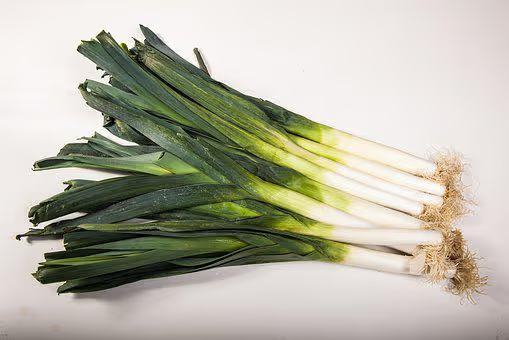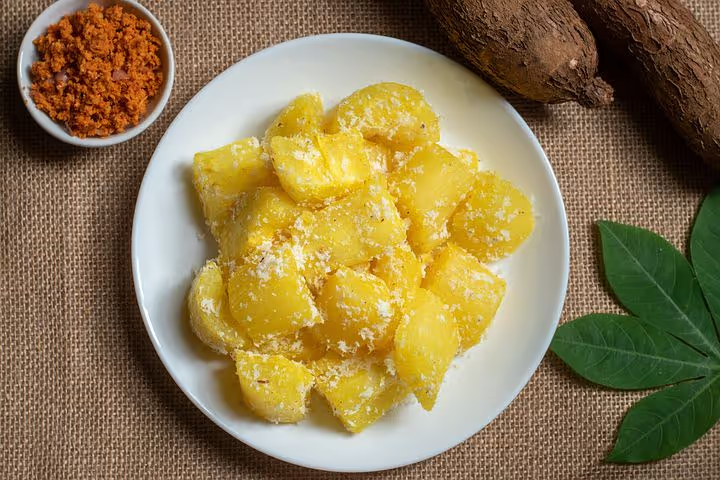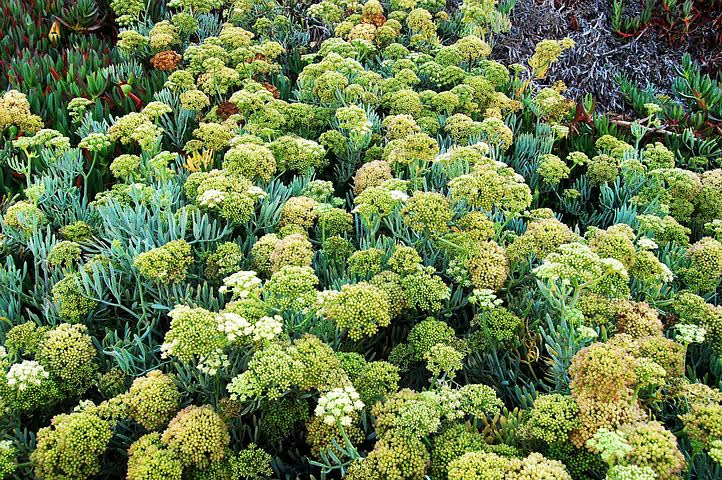Growing Dulse: A Gardener's Guide to Cultivating Seaweed

Growing Dulse
Growing dulse, the savory, nutrient-rich seaweed prized by chefs and gardeners alike, takes minimal gear—just saltwater, sunshine, and patience. Plant your starter spores in clean seawater tanks or coastal pools, provide steady water flow and bright but indirect sunlight, and you'll harvest tender leaves rich in minerals within weeks. Curious what makes dulse irresistible in kitchens and gardens? Keep reading to discover how cultivating this salty, sustainable superfood can upgrade your cooking and gardening game.
Cheatsheet: Cultivate Dulse at Home or Shoreline
🌊 Site & Water
- Use a saltwater tank or tidal zone (18–20°C / 64–68°F, pH 7–8.2).
- Salinity: 30–35 ppt (sea level).
- Change 10% water weekly; keep water oxygenated.
🛠 Tools and Products You'll Need
- Dulse seed stock (Palmaria palmata fragments)
- Rope or mesh netting
- Saltwater aquarium (if land-based)
- Air pump & water testing kit
- Mild seaweed fertilizer
- Scissors or sharp knife (for harvest)
- Buckets and gloves
💧 Planting Steps
- Attach dulse fragments to rope or netting.
- Suspend 2–4 inches (5–10 cm) below water surface.
- Ensure gentle water flow and access to filtered sunlight (8–12 hours daily).
☀️ Care & Maintenance
- Rotate ropes/nets weekly for even light.
- Remove debris and check for pests often.
- Supplement nutrients monthly (follow fertilizer label).
- Optimal density: 2–3 lbs (1 kg) per 10 sq. ft (1 sq. m).
✂️ Harvest
- After 10–12 weeks, snip outer fronds, leaving base intact for regrowth.
- Rinse harvested dulse in clean seawater.
- Sun-dry or dehydrate until crispy; store airtight.
🍃 Health & Nutrition
- Rich in iodine, iron, protein, vitamin B12.
- Contains antioxidants; aids thyroid, supports immunity.
- 100g dried dulse = up to 30% RDA of protein.
🌱 Self-Sufficiency Value
- Dulse yields 1–2 lbs (up to 1 kg) per sq. meter/season.
- Add to soups, salads, breads for savory nutrition.
- Store dried dulse for months without spoilage.
-
Growing Dulse: A Gardener’s Guide to Cultivating Seaweed
I started Growing Dulse after a winter gale tossed a ribbon of Palmaria palmata across my boot, ruby as beet juice and smelling like tide and smoke. Pan crisped, it tasted like bacon met the ocean at sunrise.
Why dulse belongs in the gardener's kit
Dulse is a cold water red alga packed with protein, potassium, and iodine, with a briny umami that plays well in soups, salads, and snacks. It grows clean in winter light, and it rewards patience with thick, mineral rich blades.
Global seaweed production topped 35 million tonnes wet weight in 2019, with about 97 percent farmed in Asia, FAO reports. That rising tide now includes small premium crops like dulse.
In western Ireland and Atlantic Canada, families have dried dulse on stone and line for generations. As Bord Iascaigh Mhara noted, the plant “is part of coastal culture,” and the best flavor comes from cool, high flow shores.
Site and water: the non negotiables
- Temperature: 41 to 59 F, 5 to 15 C, peak growth near 50 F, 10 C.
- Salinity: 28 to 35 parts per thousand, stable, clean, low in runoff.
- Flow: steady current or strong aeration that keeps fronds gently moving.
- Light: bright winter spring light, avoid harsh mid summer exposure in shallow water.
- Depth on lines: 3 to 10 ft, 1 to 3 m, deeper in clear water, shallower in turbid water.
- Bottom: avoid silty basins, choose rock or firm sand nearby to limit resuspension.
Two paths that work
Rope culture in tidal water
- Permits first, then site a protected cove with good tidal exchange and low freshwater input.
- Source hatchery seeded twine of Palmaria palmata, or take clean wild cuttings for vegetative nubs, local genetics handle local seasons better.
- Spiral seed twine onto 3/8 in, 10 mm, growlines, 6 to 8 turns per foot, 20 to 26 per meter, keep tension even.
- Rig longlines 100 to 330 ft, 30 to 100 m, on moorings, use droppers to set culture lines at target depth.
- Deploy late autumn to early winter, water 41 to 50 F, 5 to 10 C, to outrun fouling organisms.
- Spacing: 3 to 5 ft, 1 to 1.5 m between lines, leave working alleys for skiff or wading access.
- Check biweekly, trim tangles, nudge depth as the sun climbs, keep blades fluttering, not whipping.
Tank culture for inland growers
- Use food grade tubs or IBC totes, 50 to 300 gal, 190 to 1100 L, opaque walls curb nuisance algae.
- Mix synthetic seawater to 30 to 33 ppt using a reef salt blend, test with a refractometer.
- Temperature control holds the crop, 46 to 54 F, 8 to 12 C, a chiller beats ice jugs for consistency.
- Lighting at 100 to 200 µmol m^-2 s^-1, 12 to 14 hours daily, LED bars hung 12 to 24 in, 30 to 60 cm above the water.
- Aerate with ring diffusers and provide circular flow, aim for a gentle tumble that rotates clumps without tearing.
- Fertilize with a proven seawater mix like PES or f/2 at low dose, change 15 to 25 percent water weekly.
- Stocking density: start at 0.5 lb per gal, 60 g per L wet weight, thin as biomass doubles, keep light reaching the inner fronds.
Seedstock, life cycle, timing
Dulse alternates between visible blade phases and a microscopic phase, which is why hatcheries matter for reliable seeding. I have also had success with thumb size blade cuttings pegged into twine, planted in December before biofouling ramps up.
Ask for local strains from a reputable hatchery or research partner. Regional stocks give tighter fronds and better color under local daylength and nutrient swings.
My field notes from cold Atlantic water
My fastest spring growth hit about 2 percent per day at 48 F, 9 C, under clear, moving water. The sweetest blades came off lines set at 6 ft, 1.8 m, where the current hummed and light still punched through.
Summer fouling taught me to harvest early, by late May in southern sites, mid June farther north. Grazers nibbled night after moonrise, so I lifted lines 1 ft, 30 cm, and the bite marks stopped.
Biofouling control without drama
- Season: seed in late fall, harvest late spring, the cool window stays cleaner.
- Depth: drop lines as water warms, then raise them if epiphytes bloom near the bottom.
- Flow: move gear into stronger current lanes after big rains to flush silt and spores.
- Hygiene: handle with clean gloves, rinse tools in brine, remove any brown fuzz at first sight.
- Shade: a light shade cloth in tanks keeps green film algae from stealing the show.
Harvest, handling, drying
Harvest when blades reach 6 to 12 in, 15 to 30 cm, thick and pliant, leave holdfasts and basal stipes to regrow. Cut with shears into bins, never let the pile heat, and keep it out of full sun.
Rinse once in clean seawater, then a quick dip in cool freshwater to shed surface salt and sand. Dry on food safe racks or in a dehydrator at 95 to 104 F, 35 to 40 C, until leathery with about 10 to 15 percent moisture.
Dry low and slow to protect color, vitamins, and the smoky aroma that sets dulse apart, University extension guidance echoes this across cold water species.
Store in airtight containers with desiccant at room temperature. I label by line and date, quality drifts if bins sit in humid sheds.
Food safety, water quality, and permits
Pick sites far from sewage outfalls, marinas, heavy industry, or large river mouths. Seaweeds can accumulate metals and microbes, so I use quarterly lab screens for arsenic, cadmium, lead, mercury, and indicator bacteria before selling food grade product.
Most coastal states and EU regions require aquaculture permissions, gear plans, and product traceability. I keep a simple HACCP style log with site maps, salinity, temperature, and harvest lots to satisfy inspectors and buyers.
Yields, pricing, and the honest math
On clean winter seedings, I average 0.5 to 2 kg wet per meter of line by late spring, with dry yield near 12 to 18 percent of wet weight. Tanks return similar ratios if you hold temperature and nutrients steady.
Premium dried whole leaf can retail high, while farm gate bulk sits lower, local markets set the ceiling. Restaurants pay for consistent color, clean edges, and a reliable calendar.
Gear list and shopping notes
- Growlines: 3/8 in, 10 mm poly or soft braid, plus clips, swivels, and droppers.
- Seed twine: hatchery inoculated Palmaria on cotton or small diameter synthetic.
- Mooring: screw anchors or blocks sized to current, with chafe gear that survives a nor’easter.
- Totes: food grade bins with drain screens, stackable, easy to sanitize.
- Tank kit: reef salt mix, chiller, LED bars, ring diffusers, metering pumps, refractometer, test kits.
- Drying: mesh racks, dehydrator with precise low heat control, humidity cards, desiccant packs.
- Safety: PFDs, knives on lanyards, headlamps, tide book, VHF, simple things that save skin.
Flavor and use: chef grade tips
Toasted in a dry pan, dulse snaps and sings, then softens like prosciutto on hot bread. Steeped 5 minutes, 2 g per cup, 2 g per 240 ml, it turns broth crimson and savory.
I grind dry odd bits into a shaker with sesame and citrus peel. A pinch on eggs or roasted roots makes a weekday taste like a salty holiday.
Comparisons for gardeners
- Dulse vs sugar kelp: dulse is compact and winter hardy, kelp is faster and heavier but wants bigger water.
- Dulse vs sea lettuce: dulse holds texture and color when dried, sea lettuce grows quick in tanks but bruises easily.
- Dulse vs nori (Pyropia): dulse handles lower light and colder water, Pyropia demands precise sheet culture.
- Dulse as a fertilizer: brew a mild tea from trim, 1 oz in 1 gal, 30 g in 4 L, and foliar spray brassicas for a trace mineral bump.
Common questions I get
Can I grow dulse on a pier? Yes, if you have flow, winter temperatures, and permission, short droppers on the shaded side do well.
Does it regrow after cutting? If you leave the holdfast and a short basal strip, new fronds push in the next cool season.
Will it foul my tanks? If temperature creeps above 57 F, 14 C, and nutrients are high, green film takes over, pull back light and feed, then water change.
How do I know it is clean enough to eat? Test your water source, test your product, keep records, and stay away from contamination risks.
Field backed timing by latitude
- 45 to 50 N: seed Nov to Jan, harvest May to early Jul, colder water buys time.
- 40 to 45 N: seed Nov to Dec, harvest late Apr to early Jun, move deeper after April sunlight spikes.
- Tank culture anywhere: keep 46 to 54 F, 8 to 12 C, and you can stagger batches year round.
References I trust
FAO, The Global Status of Seaweed Production and Markets, for production context and food safety framing. Seafish UK and BIM Ireland, species notes and harvest handling guidelines for Palmaria palmata.
Peer reviewed work on cold water red algal growth rates and nutrient needs backs the temperature and light ranges described. Local extension bulletins fill in the permit and handling details for your coast.
One last field truth
On a clear April low tide, red fronds catch the sun like stained glass in motion. Anthony Bourdain would have said to cook what the water gives you, and dulse gives plenty if you respect the cold, the flow, and the clock.
Frequently Asked Questions on Growing Dulse
What kind of environment does dulse thrive in?
Dulse thrives best in cool, nutrient-rich seawater with temperatures between 43°F and 59°F (6°C to 15°C). Select an aquatic growing area with gentle current and stable water clarity to foster healthy growth.
Can I cultivate dulse at home without seawater?
Yes, cultivating dulse at home is possible by recreating its marine habitat. Prepare a controlled saltwater tank with salinity between 30 and 35 parts per thousand (ppt), ensuring moderate water circulation, adequate lighting, and stable, cool temperatures.
How deep should the dulse be submerged during cultivation?
Dulse grows best submerged between 12 and 24 inches (30 to 60 centimeters) below the water surface. At this depth, the plants receive appropriate light exposure and nutrient distribution, essential for robust development.
Does dulse cultivation require special fertilizer?
Although dulse naturally absorbs nutrients from seawater, supplementing with marine algae-specific liquid fertilizers can encourage vigorous growth. Use fertilizers rich in nitrogen, phosphorus, and potassium, following the manufacturer's recommended dosage carefully.
How do I harvest dulse sustainably?
Practice sustainable harvesting by carefully trimming tips of the fronds, leaving the base intact. Allow roughly 3 to 4 inches (7 to 10 centimeters) of growth to remain, which promotes continuous, sustainable regeneration of the plant.
What's the ideal lighting condition for cultivating dulse indoors?
Indoor cultivation of dulse requires consistent exposure to moderate, indirect artificial lighting. Use fluorescent or LED lights positioned 12 to 18 inches (30 to 45 centimeters) above the water surface, maintaining a daily photoperiod of typically 10 to 12 hours.
Growing Dulse puts you in touch with a wilder side of gardening—one shaped by tides, patience, and the flavor of the sea. This isn’t your average backyard green. Dulse rewards attention to clean water, timing, and careful harvesting. Give it the right conditions, and you’ll be pulling in harvests loaded with minerals and umami, ready for the skillet or salad bowl. Don’t be afraid to experiment—those who grow dulse often end up changing how they cook.
Like tending borage or duck potato, growing dulse adds a fresh dimension to your skills and your table. There’s grit, satisfaction, and a certain poetry in farming the tides. Stay curious, respect the process, and your dulse will give back more than you expect. That’s what real gardening is about.
Health Benefits of Homegrown Dulse
Nutrient-Dense Edible Seaweed
- Protein-Rich: Provides up to 16g protein per 100g dried.
- Mineral Boost: Significant source of iodine, essential for thyroid health.
- Vitamin Packed: Excellent levels of vitamins A, B-complex, C and K.
Heart and Cardiovascular Support
- Omega-3 Fatty Acids: Contains EPA beneficial for cardiovascular health.
- Potassium: 7820mg potassium per 100g dried dulse aids blood pressure regulation.
- Low Sodium Content: Natural salty taste, yet lower sodium than table salt; helps reduce sodium intake.
Digestive and Gut Health
- Dietary Fiber: Promotes digestive system regularity, supports gut microbiome balance.
- Prebiotic Properties: Encourages beneficial gut bacteria growth for immune health.
Antioxidant and Anti-Inflammatory Compounds
- Polyphenols: Red algal polyphenols combat oxidative stress and inflammation.
- Fucoxanthin: Present in small amounts, studied for anti-obesity properties.
Heavy Metal Detox Potential
Alginates within dulse bind heavy metals, potentially aiding in detoxification and preventing heavy metal absorption.
Find out which plants will thrive in your garden!
Answer a few fun questions and get custom plant recommendations perfect for your space. Let’s grow something amazing together!

start your season
